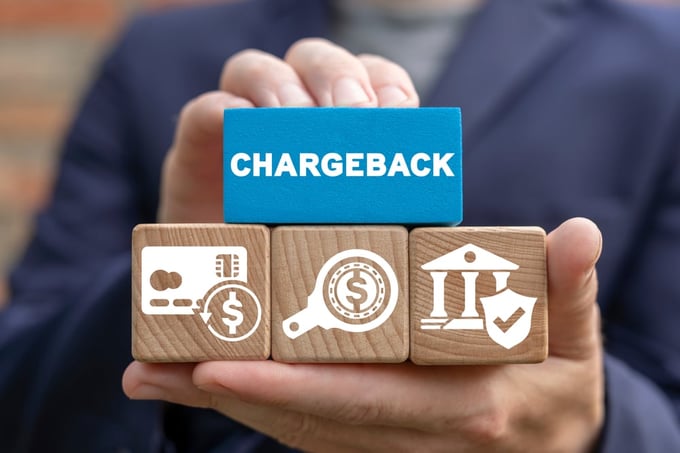Spending on your credit card is all fine and dandy until you receive a bank alert about an unauthorised transaction attempting to go through or your purchase is defective or worse, failed to deliver. Confusion starts and panic ensues.
For some, the thought of credit cards is a godsend for shopping and claiming rewards. Whereas for others, the thought of incurring and accumulating credit debt scares them more.
But what many don’t realise is how transaction disputes might be easier to manage in credit cards as compared to your debit cards. For instance, if an authorised or fraudulent transaction is being charged to your credit card, the credit card charge ‘register’ the debt.
Conversely, fraudulent charges in debit card transactions will deduct money straight from your account. Nothing much can be done initially for the latter apart from blocking your card and freezing the account.
None of these scenarios is ideal, so what can we do about it?
- Cause of card disputes
- Reporting a dispute
- What is a credit card chargeback
- Common dispute scenarios
- Supporting documents for chargeback
- E-Payments User Protection Guidelines
- Extra tips against unauthorised scams
How can a card dispute arise?
As a consumer and cardholder, it’s essential to know the two types of disputes between buyer and merchant.
The first type happens when a cardholder insists that they did not give the authorisation for a transaction to be processed. The second type occurs when the cardholder encounters problems with the goods and services after purchasing.
Both forms of disputes can happen to either debit or credit cardholders.
How to officially report a dispute?
Whether it’s a suspected fraudulent transaction or a faulty product, the first step would be to contact your card-issuing bank immediately. If you’re able to report a lost or stolen card in time — and by that we mean no unauthorised charges have been made — then congrats! No money would be lost.
Your bank will then request you to submit a dispute resolution form within 14 days from your card’s statement date.
But what happens if you are too late and a charge already went through? That’s when a chargeback can be carried out.
What is a chargeback?
A chargeback is an initiated reversal when you’re filing a dispute against a merchant for either violating card acceptance procedures or failing to fulfil specific transaction terms and conditions. This reversal is in line with the dispute resolution process of the Card Scheme.
However, you’re not in the clear yet. Submitting a chargeback claim does not guarantee that your charge will be automatically waived. The credit card chargeback process wouldn’t get your money back as quickly as a simple refund would.
It doesn’t help that the proliferation of online shopping, cyberscams, and frauds go hand in hand, making successful unauthorised transactions reversals increasingly complicated.
Commonly-raised dispute scenarios
Here are some common chargeback scenarios often reported:
1. Unauthorised: Card-Not-Present (CNP) transactions
This transaction arises when an unauthorised person uses your card without permission to make an online, telephone or mail order purchase. This may occur with or without One-Time Password (OTP) authentication.
With OTP
Thanks to OTP verification, cardholders can verify their identity before confirming the transaction. This serves as an extra layer of security to mitigate fraudulent purchases from being processed. In this case, your bank can help to withhold the temporary credit until investigations are performed.
However, banks may hold cardholders liable and responsible if negligence is suspected as a factor in the transaction.
Nowadays, many individual and organised scam syndicates are also smarter at tricking victims into revealing OTPs through phishing sites; so simply relying on OTP as a foolproof barrier against scams is not ideal.
Without OTP
Having no OTP verification makes your credit transactions extremely vulnerable due to the lack of added protection. In this case, any fraudulent transaction should be reported immediately to your card-issuing bank to block the account.
A dispute resolution form also needs to be filled up to initiate the credit chargeback process against the merchant. During this period, banks will provide cardholders with a temporary credit or refund the disputed amount so that the cardholder’s spending balance is replenished and unaffected.
The full chargeback will be finalised once investigations are completed, and the issue is fully resolved.
2. Delayed Charges
Delayed charges are essentially unbilled charges incurred as additional transactions. Hotel mini-bars and business centres are notorious for charging patrons extra costs after checking out or leaving the premises.
Car rental companies also commonly impose additional charges on customers if traffic summons were given or the rental vehicle is damaged.
Do note that merchants have the right to file these charges because the transactions are legal and valid. However, cardholders may choose to dispute the additional charges as a defence if there’s supporting evidence against them. Your bank will assist you in voiding them.
3. Failure to deliver or faulty goods
If a merchant fails to deliver your goods and services on time, cardholders have the right to file a dispute. Documentation is needed for evidence regarding the agreed delivery timeline, including the cardholder notifying the merchant about the non-delivery.
A dispute may also be filed for faulty or less-than-ideal goods and services; however, it depends on the sales agreement between cardholder and merchant. For example, if a no-return policy was acknowledged at the point of the transaction, disputing the transaction will not be allowed.
However, if the item or service arrived damaged or not-as-described, the cardholder has the full right to file a dispute. An example would be ordering a black pair of slides online, but the merchant is sending over a green pair instead.
Before diving headfirst into a dispute, attempting an exchange or refund request first will be a more straightforward and amicable solution. Disputes should only be filed if the merchant refuses the request.
Once again, proper documentation would be necessary to prove the defective product on arrival for your bank to initiate a chargeback.
4. Transactions signed under duress or threat
Technically, these transactions are considered recognised and authorised by the cardholder.
Regardless, if you find yourself being coerced into signing a transaction or making an ATM withdrawal, contact your bank immediately for assistance. When unlawful detention or threatened bodily harm comes into play, don’t hesitate to make a police report either.
Your bank will take up the complaint with the Card Scheme and the merchant’s bank to resolve the dispute.
5. Instalment Payment Plan (IPP) transactions with merchants no longer in operation
Instalment payments allow customers to split the payment of big-ticket items, making them more temporarily affordable. Instalment plans can go up to a period of 36 months.
In the event that a merchant has ceased business, cardholders are still mandated to pay the monthly instalments. This is because your bank has already paid the full amount to the merchant at the initial point of transaction.
Hence, unless the merchant agrees to terminate the IPP and refund the bank, cardholders remain liable to finish the payment. Raising a chargeback may be possible; however, it depends heavily on your IPP agreement with your bank.
If a refund is not possible
In the worst-case scenario, you cannot claim any losses. In the best-case scenario, your bank might be able to recover the lost sum on your behalf from the closed merchant. You might also be referred to liquidators of the merchant or CASE for further assistance.
Supporting documents required for chargeback
| Dispute scenario | Relevant document | Details |
|
Goods and services not received |
Written or recorded correspondence summarising attempts to resolve dispute Detailed description of goods and services Agreed delivery timeline* Documentation showing failure to deliver goods or services^ |
Includes receipts and other relevant order information *Includes projected date of delivery and presumed date of delivery ^Includes premature business closures |
|
Faulty goods and services |
Written or recorded correspondence summarising attempts to resolve dispute Detailed description of goods and services Certification on authenticity of goods and services Date and proof of goods and services return or cancellation Letter explaining defects, damages or difference in quality |
Includes receipts and other relevant order information Includes good and services that arrived not-as-described Documentation for unused amount of partially used goods and services may also be necessary |
|
Transaction errors |
Written or recorded correspondence summarising attempts to resolve dispute Proof of payment means* Documentation showing authorised amount, currency or account number |
*Includes relevant bank or card statements |
|
Unauthorised transactions |
Written or recorded correspondence summarising attempts to resolve dispute Documentation proving requested cancellation by cardholder and received by merchant N.A. for the following: |
E-Payments User Protection
In efforts to encourage Singaporeans to go more cashless, the E-Payments User Protection Guidelines was introduced by the Monetary Authority of Singapore (MAS) since 2016. It has undergone multiple revisions, one in 2018 and the most recent in 2020.
This set of guidelines protects individuals or entities against losses stemming from erroneous e-payment transactions from protected accounts.
Protected accounts refer to accounts capable of having a balance of more than S$500 (or equivalent amount in other currencies) at any one time or is a credit facility. Naturally, this account should also be capable of electronic payment transactions.
Transaction notifications and a reporting channel are provided to individuals and sole proprietors to alert them of unauthorised transactions whenever they occur.
The relevant investigations will follow suit after, typically taking 21 business days for straightforward cases and 45 business days for complex cases.
Do check with your bank which e-wallets and stored value services are protected under the guidelines.
Extra tips to prevent unauthorised scams
Under the E-Payments guidelines, users are also expected to adopt good personal security practices for their devices against potential cyber scams and fraudulent charges. These practices include bolstering your login credentials, setting up access codes and creating protected accounts.
Avoid jailbreaking or rooting your device. Such acts will compromise your device’s security and make it more prone to vulnerabilities like viruses or malicious software. If possible, installing anti-virus software is a good extra layer of protection.
Regularly back up critical data onto another device or hard drive to ensure all important data is stored safely in multiple locations.
Personal security starts with you
In an increasingly digitalised world, we can’t stop technology from advancing. We can only take extra precautionary measures to safeguard our online activity better and protect ourselves from malicious online attacks and scams.
It’s time to be more vigilant and careful in avoiding the pitfalls of credit card theft and fraud.
Start managing and saving money like a pro with SingSaver’s weekly financial roundups! We dole out easy-to-follow money-saving tips, the latest financial trends and the hottest promotions every week, right into your inbox. This is one mailer you don’t want to miss.
Sign up today to receive our exclusive free investing guide for beginners!
Read these next:
Credit Card Fraud: How to Better Protect Yourself?
What’s A Credit Line And When Is It A Better Option Than Credit Cards
Top Credit Card Promotions And Deals On SingSaver (March 2022)
Credit Card Welcome Offer: A Comparison of the Best Gifts
Can Cancelling a Credit Card Have Detrimental Effects?
Similar articles
3 Reasons To Never Pay ‘In SGD’ When Swiping Your Credit Card Abroad
Lemon Law In Singapore – What It Is, How It Works, Getting Refunds
4 Things To Do Immediately If Your Credit Card Details Get Stolen
Credit Card Fraud: How to Better Protect Yourself?
What Should I Do If My Credit Card Gets Stolen in Singapore?
4 Major Reasons Why Your Credit Card Application Was Declined
When is a Debit Card More Dangerous than a Credit Card?
5 Great Reasons to Own a Credit Card in Singapore











